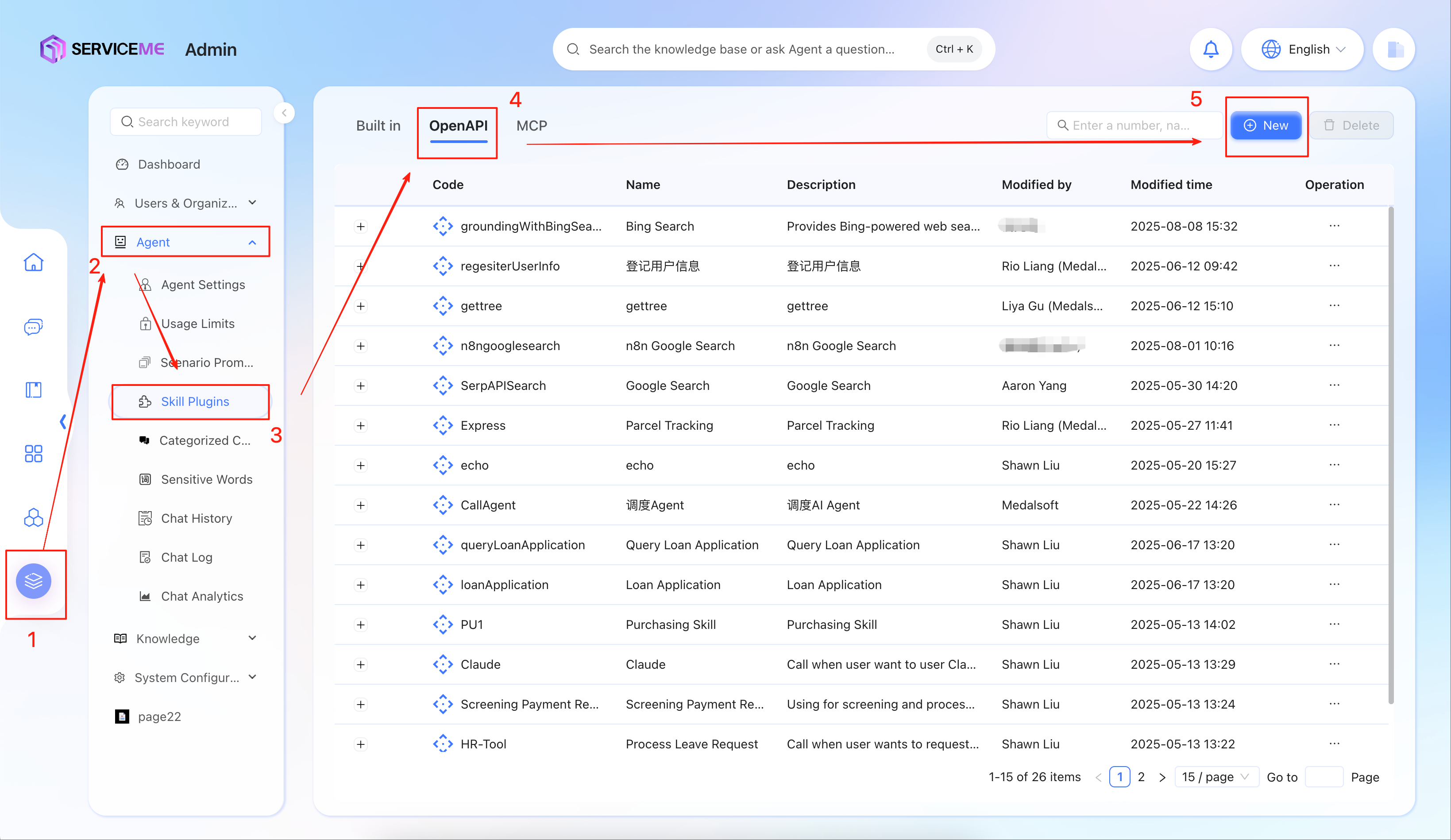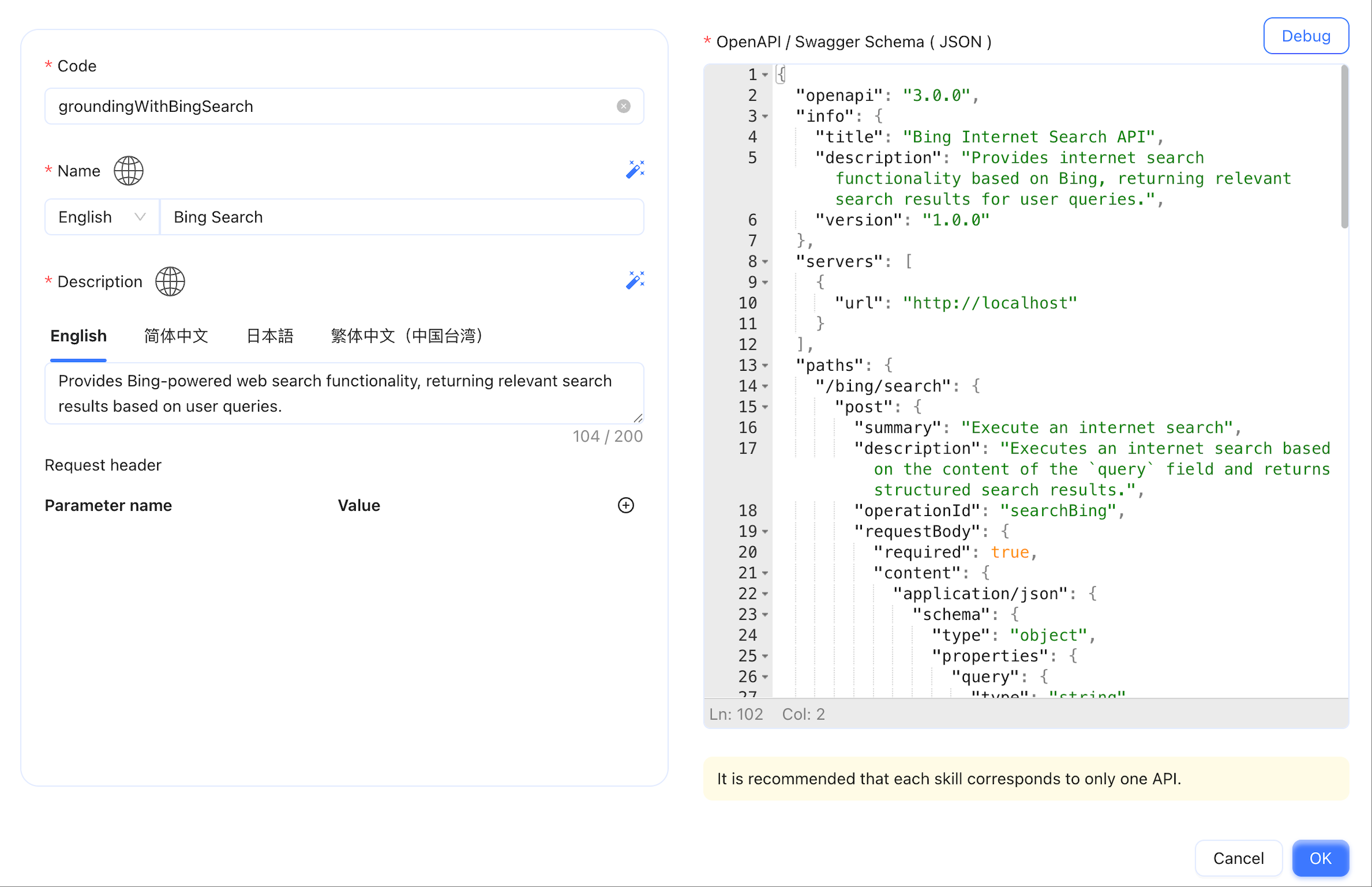如何配置AI Agent自定义插件
AI Agent 自定义插件允许你将自己的 HTTP 接口无缝集成到 AI Agent 中,使其成为 Agent 可用的强大工具。
1. 插件工作原理
AI Agent 自定义插件的核心原理在于,它能将你的 HTTP 接口转化为 AI Agent 可以理解和调用的工具。你需要在自定义插件中,使用 OpenAPI Specification 格式对你的接口进行详细描述,包括请求方式、请求地址、入参、返参等。通过这种标准化的描述,AI 就能理解你的接口功能,并在需要时自动调用它。
2. 自定义插件添加入口
要添加自定义插件,请按照以下步骤操作:

3. 自定义插件配置详情
在打开的配置表单中,你需要填写相关信息来定义你的插件。以下是每个参数的详细说明:

- Code:这是插件的唯一标识符,要求是不重复的英文内容。为了方便 AI 理解和使用,请尽量使用一个有意义的名称,例如 get_weather_info 或 send_email_notification。
- Name:插件的名称,用于在系统中显示。
- Description:对插件功能的简要描述。这个描述对 AI 理解插件用途至关重要,请务必清晰准确地说明插件可以做什么。
- Request Header:如果你的接口需要身份认证,可以在这里配置请求头信息,例如设置 Authorization 或 Token 来进行验证。
- OpenAPI / Swagger Schema (JSON):这是配置中最关键的部分,用于描述你的接口。
关于 OpenAPI / Swagger Schema (JSON)
OpenAPI Specification (OAS) 是一种用于描述 RESTful API 的标准格式。它以 JSON 格式定义了 API 的各种信息,包括:
- 服务器地址
- 所有可用的路径(endpoints)
- 每个路径的请求方式(GET, POST 等)
- 请求参数
- 响应内容
- 认证方式 如果你想深入了解这个标准,可以访问官方文档:OpenAPI Specification。
让 AI 帮助你生成 OpenAPI JSON
为了简化这个过程,你可以直接让 AI 来帮助你生成这个 JSON 内容。使用以下提示词,并替换其中的占位符内容:
请帮我根据以下接口信息,生成一个符合 OpenAPI 3.0 规范的 JSON 对象:
接口地址:${你的接口URL}
接口方法:${GET/POST/PUT/DELETE}
接口入参:${接口的参数列表,包含参数名、类型、是否必填、描述}
接口返参:${接口的返回内容结构}
接口描述:${对该接口功能的简要描述}
将 AI 生成的 JSON 内容复制并粘贴到 OpenAPI / Swagger Schema (JSON) 输入框中即可。